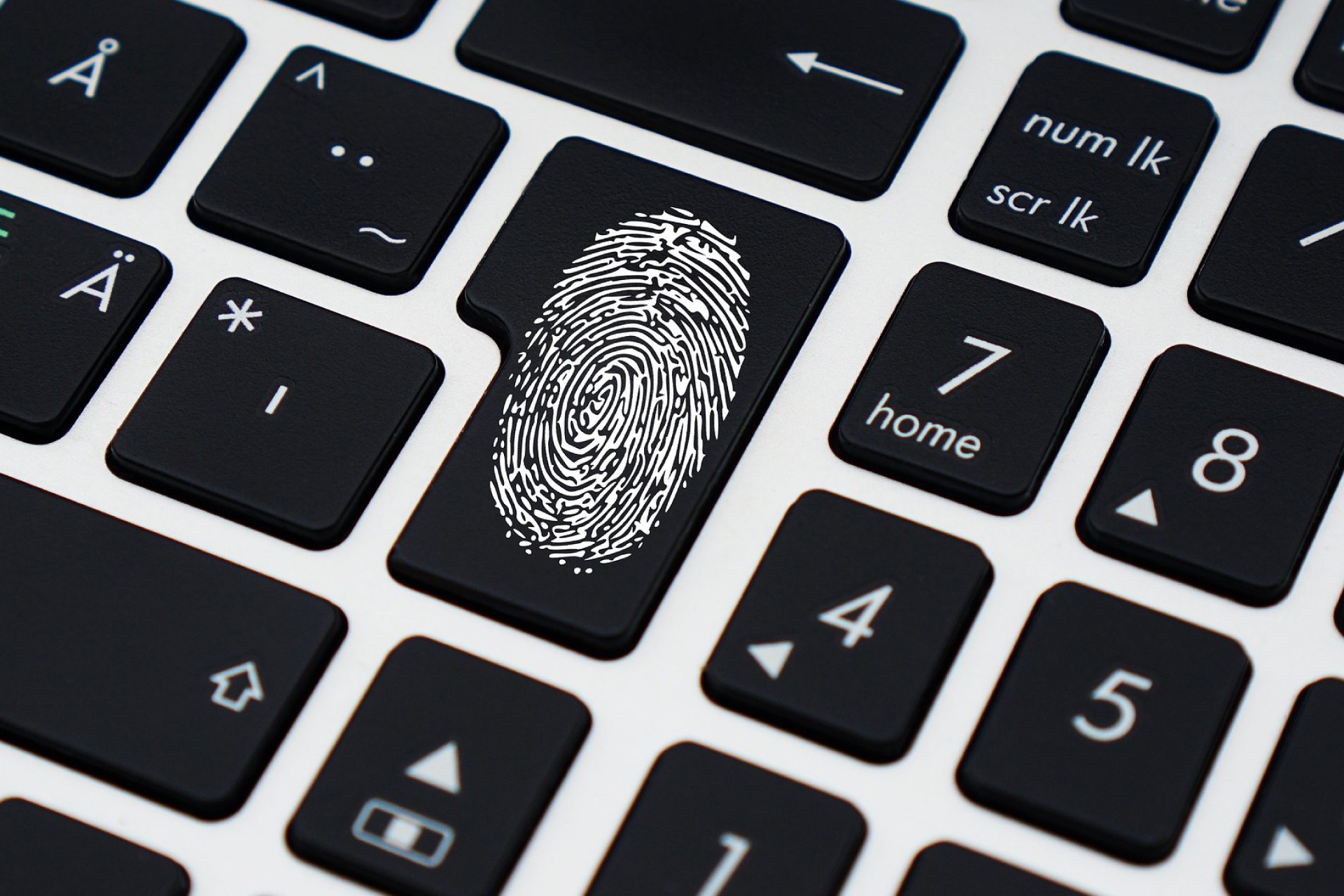What is biometrical authentication?
As more and more companies move towards biometrical authentication, it’s important for managers to understand the pros and cons of this technology. In fact, while it can offer greater security, it also comes with potential privacy concerns.
What is biometrical authentication? Biometric authentication is a method of identification and access control that uses one’s unique physical attributes as proof of identity. This identification process relies on examining various parts of the body, such as blood vessels or facial features, to form accurate biometrical data. This data is then compared with the data already in possession to verify or recognize a person’s identity with greater accuracy than traditional methods such as passwords or key cards could provide.
Biometric authentication is particularly used in digital onboarding processes, online banking transactions, border control, and premises access control. However, a very common example we experience every day is when we unlock our smartphones through facial recognition or fingerprint.
The pros of biometrical authentication
Biometric authentication is becoming increasingly common, even within multifactor authentication methods. Just to give you an idea, the value of the global biometric technology market in 2020 was about $35,000 million, and forecasts say that by 2030 it will grow at a CAGR of 14.1%.
There are several reasons behind this success, for example:
- Accuracy: Because biometric data is unique for each person, it makes it easier for companies to accurately identify legitimate users and deny access to unauthorized ones. Biometric authentication systems are designed to recognize a person’s physical attributes to verify their identity with greater accuracy than traditional methods such as passwords or key cards could provide. This high level of accuracy makes biometric authentication an excellent option for preventing unauthorized access to data.
- Increased Security: Biometric authentication is that it offers more security than a password. This is because it is very difficult, if not impossible, for cybercriminals to steal or forge biometric data, which is unique to each of us. So, by confirming an individual’s identity, this technology prevents unauthorized users from accessing confidential information or resources. The accuracy and convenience of biometrical authentication also make it difficult to bypass, reducing the risk of fraud.
- Privacy: Biometric authentication offers a level of privacy that traditional methods such as passwords and key cards do not. By using biometrics, organizations can be sure that only authorized individuals are able to access their data and resources.
- Convenience: With biometrical authentication, users can quickly verify their identity with a few clicks or swipes. This reduces the time and effort required to log into devices and applications, making it more convenient for legitimate users while also deterring fraudulent activity. The same goes for businesses and organizations.
- Improved User Experience: Biometrical authentication offers a fast, secure, easy-to-use experience that users appreciate. It is not easily fooled, is widely accepted, and it saves users from having to remember passwords. When users can access resources quickly and easily, their satisfaction and loyalty improve.
- Cost Savings: Organizations can save money by using biometric authentication systems. By reducing the need for physical security and personnel to monitor it, they can save on costs associated with having someone physically present to verify a user’s identity. In addition, eliminating passwords can save companies time and resources required to reset forgotten passwords as well as reduce the risk of data breaches and the economic consequences.
- Durability: Biometric authentication is much more durable than other forms of identification. For example, while a password could be forgotten or stolen, biometrics cannot be lost or easily compromised. This makes it a great choice for organizations that need to secure their data and resources over time.
- Scalability: This method provides organizations with the ability to scale their security solutions as needed. As technology advances, biometrics can be easily integrated into existing systems, allowing for increased flexibility. This makes it ideal for businesses that need to quickly and securely authenticate a large number of users.
The cons of this authentication method
Biometrical authentication is not yet infallible and it also carries some risks:
- Potential Privacy Concerns: Although privacy is one of the strengths of biometric authentication, it is also a potential weakness. Biometrics involves the collection and storage of sensitive personal data. If the data is not stored with proper cyber security measures, this could pose a risk to an individual’s privacy.
- Cost: On the one hand, biometric authentication reduces some costs, but on the other hand, it requires some investment, especially at the time of implementation. However, these costs depend on the type of technology used. Moreover, organizations must ensure that employees are properly trained in how to use and manage the system correctly, and this can add additional costs to an organization’s budget.
- False Reject Rate: There are still occasional errors and false positives that can lead to denial of access for legitimate users. In particular, low-quality images can fail the verification process since the technology relies heavily on data accuracy.
- Cultural Issues: Biometric authentication may not be accepted in certain parts of the world due to cultural issues. For example, some religions may view biometrics as an invasion of privacy and therefore do not allow its use. Furthermore, people may view biometrics as a form of surveillance or feel uncomfortable with the idea of having their personal data stored in a database.
How to choose the right biometric authentication system
Despite the flaws of evolving technology, companies can avoid many of the drawbacks seen above by setting the right policies and choosing the right tools. In general, when thinking about building a biometric authentication system for your business, there are a few things to consider:
- Which is the right authentication methods? Different biometric technologies offer different levels of security, accuracy, and convenience. It is important to consider which technology works best for your organization based on its resources and needs, but also for the service you offer and your audience. For example, face recognition is more suitable for public areas, while fingerprint recognition is best used in private settings.
- How much is your budget? As mentioned above, in the beginning, biometric authentication is more expensive than passwords and keycards, due to hardware and software requirements. Therefore, careful budgeting is essential to ensure that the system is cost-effective while meeting all of your organization’s requirements.
- Do you have privacy policies? As biometrics involve collecting and storing sensitive personal data, organizations must have strict privacy protocols in place to ensure that data is stored securely and not misused or abused in any way.
By selecting the right authentication method and ensuring that the necessary security protocols are in place, you can effectively implement biometric authentication systems with minimal risk. This allows for greater convenience for users while providing you with an effective way to verify identities accurately and securely.








